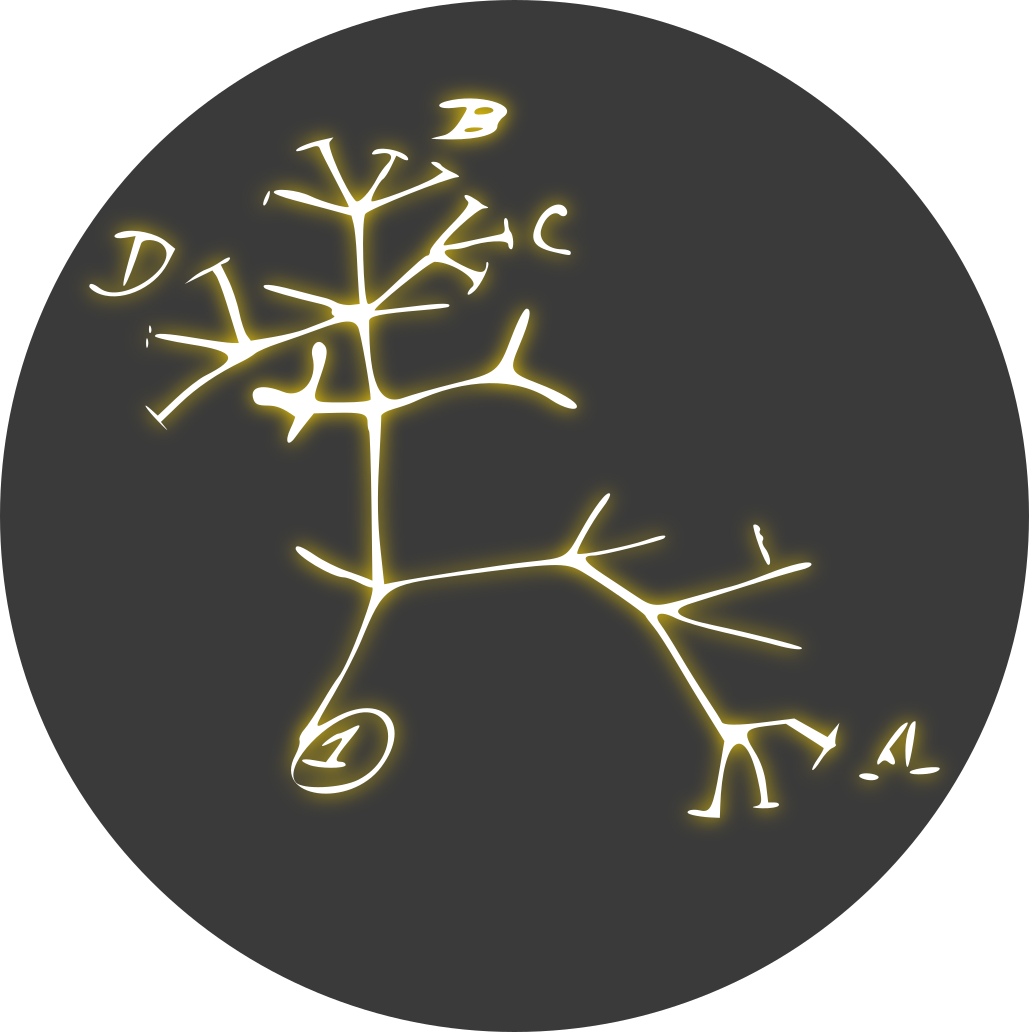9ft of snow?! I only experienced such deep snow in an urban setting while living in Connecticut for a year. I spent a few years in Oregon but the snow in the area never got so deep while I was there. When I was in the US I was not yet able to identify many fungi as I was mainly obsessed with animals (especially salamanders) back then, so unfortunately I did not really appreciate the diversity of fungi there. Although once in Oregon I did attempt to dye some socks using a wolf lichen (Letharia vulpina) and a pressure cooker. That did not end well.
Salamander
- 184 Posts
- 433 Comments
I see. So it is not necessarily that their mycelium are better at surviving the freezing temperatures, but rather that either they fruit quicker once conditions are acceptable or that their fruiting bodies are more cold tolerant. Thanks, it’s interesting.
Cool! I just read their wiki page and it says
A snowbank fungus, it is most common at higher elevations after snowmelt in the spring.
Snowbank fungus is a new term for me. Not sure yet what makes a fungus thrive through snow. Maybe they have anti-freeze proteins?
Does your area get a lot of snow?

 4·1 month ago
4·1 month agoWow, those spores are so bumpy, they are very interesting! Thanks for sharing :D
Great find, congratulations!!

 3·2 months ago
3·2 months ago7?! Was it a single day hike? They are beautiful, great shots!

 19·2 months ago
19·2 months agoNo I won’t ;)

 6·2 months ago
6·2 months agoVery cool! Nice work :D

 5·2 months ago
5·2 months agoI think the belief is more grounded in them wanting it to be true. A faith-based belief. In the video he refers to ancient Egyptians and lost hidden knowledge. I would categorize it as a form of pseudo-scientific spirituality.
I don’t think the belief starts from a rational basis. The guy likes snakes, has a rational basis for developing immunity through self-envenomation. At some point he might want the project to bring even more value than that. “Ageing” is a nice target because it is an aliment that affects us all and for which we have no solution. The rationalization would then come after hoping that this is true.
As how to rationalize. I am not sure but I have a guess. I often I see rationalizations for this kind of claim to hinge on the idea of adapting the body to survive some form of stress. The stress-adaptation arguments draw an analogy to the concept of working out and vaccines. You stress and break your muscle cells, your muscles recover and become stronger. You inject venom or small quantities of a virus and your body becomes better able to fight it.
Many pseudoscientific ideas generalize the concept of stress adaptation and apply it to other situations even if the data is not available (or, worse, contradicts it). For example: some people will actively expose themselves to low doses of radiation in the hope that this will train their cells to repair DNA damage by up-regulating DNA repair genes. The idea is that they increase their resistance to ageing. For snake venom: my guess is that they imagine that snake venoms will stress some ageing-relevant pathway that will somehow train adapt the body to resist such stress, and this way the body is more resistant to ageing.
What makes bodybuilding and vaccines scientific but radiation dosing and snake-venom-for-ageing pseudoscientific is that… the first two are supported by a lot of data! The others are hypotheses that might be worth testing, but skipping all steps and going right to self-medicating due to holding a strong belief without data is pseudoscientific.
Nice! Just yesterday I was finally able to write a simple driver to drive my Core1262-868M. I was search for ‘SX1262’ to find some discussions and found your attempt. Have you continued playing with it? At the moment I have made a very basic Rx/Tx system to transmit packets for sending sensor data to a raspberry pi. Not sure yet if I will integrate it with Meshtastic yet as sending and capturing LoRa packets will probably be enough for me, but I’m curious.
I think the difference in time is too big. Also, in the talk page’s archive it is stated that the wikipedia was updated because of this meme, and not the other way around. This is from the talk page:


 2·4 months ago
2·4 months agoThanks a lot for looking into this!
While the iPSC technology has not yet advanced to a stage where therapeutic transplants have been deemed safe, iPSCs are readily being used in personalized drug discovery efforts and understanding the patient-specific basis of disease.
I am not super familiar with the topic, but I have been told of some successful animal studies on implanting the organoid tissue into the animals from which the stem cells were derived.
This other article from 2013 lists a few concerns, and I think this is the closest to what you were looking for: https://pmc.ncbi.nlm.nih.gov/articles/PMC3931018/#sec3
Yeah, that covers nicely what I was wondering about. Especially the reason 1 (embryonic proteins not present during immune system education) and reason 2 (epigenetic changes). I can appreciate that these mechanisms might possibly cause issues, but I would be curious to learn the actual magnitude of their impact.
Yamanaka named iPSCs with a lower case “i” due to the popularity of the iPod and other products.
Oooh, that’s why! I do think iPSC looks nicer than IPSC. Not a big apple fan, though
Looking through the archived history of the talk page, I can confirm that the claim on the wiki page is derived from the viral post, and not the other way around: https://en.wikipedia.org/wiki/Talk:Gulf_of_Mexico/Archive_3#Chalchiuhtlicueyecatl

How did I miss that?!
My timeline is incorrect then. Since the post from sassymetischick.bsky predates the wiki edit, it is more likely that the wiki edit was made in response to this meme, and not the other way around. This pretty invalidates what I said above…
I still can’t find any evidence of this being an actual trend, but I no longer have a good guess about the origin.
Cuando quieras! 😁
Yes, but that version is in German. That website also has one in English: https://annas-archive.org/slow_download/24154814bfe1e676d79509c3db1f74a4/0/0
Let’s see…
Woah, interesting. The author is José López Portillo. I thought he shared the name with a former Mexican president, but, nope, the author is a former Mexican president.
The title of the English version is a bit different, but the text appears to be the same. It is a novel, and I can find no mention of the gulf of Mexico or of Chalchiuhtlicueyecatl in this book. To me it looks like a mistake in the citation.
The claim appears to come from this text (citation 1): https://www.scribd.com/document/703207646/Dioses-prehispanicos-de-Mexico-mitos-y-deidades-del-panteon-Fernandez-Adela-1992-Mexico-D-F-Panorama-Editorial-9789683803061-cbee5

Unfortunately, that book does not contain references nor is it stated where this claim comes from.
EDIT: As indepndnt mentioned in a comment below, the OP was posted on February 14, which pre-dates the wikipedia edits. So, my conclusions below about the timeline are not valid.
Hah, sure, let’s investigate 🕵️♂️
The term ‘Chalchiuhtlicueyecatl’ was added as a potential Aztec name to the English wikipedia page on February 15, 2025, by user ‘Mxn’.
The description of the edit is the following:
Frum says the Aztecs had no specific name for the gulf, which is plausible in a practical sense, but Fernández gives a specific religious name and is more of a reliable source on this topic
If we investigate a bit further, we can see that the term Chalchiuhtlicueyecatl is described to be a name for the ‘Gulf of Mexico’ in the spanish Wikipedia: https://es.wikipedia.org/wiki/Chalchiuhtlicueyecatl
This page was updated to include the description of Chalchiuhtlicueyecatl as the ‘Gulf of Mexico’ in September 16, 2018. I don’t have access to the citation so I don’t know if the citation specifies if this term is still known/used.
If you check the history you will find that the same ‘Mxn’ fixed a typo in this page on February 15, 2025.
So, from this sequence of events it is highly likely that the term ‘Chalchiuhtlicueyecatl’ was included into the Gulf of Mexico wiki page as a result of the user Mxn performing an active search for Aztec names for the Gulf of Mexico, and finding this connection between the term an the gulf by searching on Wikipedia. This information did not come from recent news about the term being used by natives.
I can find no evidence of native people referring to the gulf of Mexico as ‘Chalchiuhtlicueyecatl’ more frequently or at all. I can find no mention of this becoming viral in Mexico.
I find it highly unlikely that:
- User Mxn added an obscure Aztec term to the Wiki page two weeks ago
AND
- This same obscure Aztec term coincidentally began being used by Mexican natives, and this trend became popular enough to be noticed by foreign media but not by Mexican media
More likely…
- Mxn actively looked for a term and updated the English wiki
- Someone read the English wiki, thought this would be a nice story, made the meme
And this concludes my little investigation 🧐

 2·4 months ago
2·4 months agoInteresting! I wonder if it is already technically feasible to culture tooth-like pieces from the patient’s stem cells. Instead of extracting and carving a tooth, it would be cool to grow the tissue in some kind of structured 3D matrix. Patient gets to keep their canine then.
That said… Do you know if tissue grown from a patient’s own stem cells is generally not rejected by the immune system? I am not sure if cells need to differentiate within the body to get labeled by some molecular markers that make them immunocompatible, or if having the same genetic makeup is good enough.

 1·5 months ago
1·5 months agoI think it would be an interesting hypothesis to test.
I looked a bit more and extended my search into brines, and was able to find another set of data in the following paper:
Roupas, P., Keogh, J., Noakes, M., Margetts, C., & Taylor, P. (2010). Mushrooms and agaritine: A mini-review. Journal of Functional Foods, 2(2), 91-98.
This one is not freely available, but it is found in SciHub and I can also share the PDF if needed.
This relevant section discusses that mushrooms canned in liquid and in brine were measured to have less agaritine, which makes sense. I think that lactofermentation helps degrade even more due to the acid, additional metabolic activity, and possibly a bit more oxygen.
I agree that it would be nice to research. I am surprised that it hasn’t been (or at least it is not easy to find). I did find research on other methods such as heating and drying, but I could not find lacto fermentation…
Agaritine content of mushrooms
The agaritine content in fresh A. bisporus mushrooms in Swit- zerland has been reported to be in the range of 94–629 mg/kg fresh weight. Canned mushrooms contained 1–55 mg/kg drained weight with 3–103 mg/L in the liquid. The highest agaritine values were reported in dried commercial mush- rooms amounting to 2110–6905 mg/kg (Fischer et al., 1984). In Sweden, Andersson et al. (1999) measured agaritine in fresh mushrooms and 35 canned mushroom products (A. bisporus). Two fresh samples contained 212 and 229 mg/kg, respectively. Agaritine levels in brine were generally slightly lower than the levels detected in canned mushrooms. Canned whole mushrooms contained 14.9 ± 6.7 mg agaritine per kg product whereas cut mushrooms contained 18.1 ± 7.8 mg/kg. The wet canning process was shown to reduce the level of agaritine in A. bisporus by 10-fold resulting in lower levels in canned products. On a portion basis, somewhat higher amounts of agaritine may be found in some other food prod- ucts (mushroom soup and pasta sauce) containing A. bisporus (Andersson et al., 1999).
Moderates








- Self sufficiency@mander.xyz


- Nuclear@mander.xyz
- Plants@mander.xyz
- Nudibranchs@mander.xyz
- New Communities@mander.xyz
- Entomology@mander.xyz
- Photosynthesis@mander.xyz


- Invertebrates@mander.xyz









Would love to… When I was in Oregon this lichen was super abundant. At the moment I am living in Amsterdam (Netherlands), and I see mostly Xanthoria, Evernia, Rhizocarpon, and a few other lichen species that grow on city trees, but they are very small and spotty, nothing compared to the wolf lichen in Oregon. I do miss the Oregon forests with the old growth sequoia redwood trees and all that lichen.